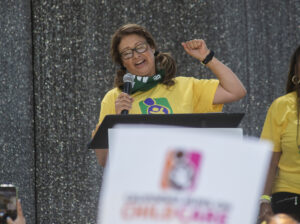
California child care providers demand raises from Gov. Newsom as budget deadline looms
BY JEANNE KUANG Gabriela Guerrero’s children are all grown and have moved out, but the former stay-at-home mom never stopped raising


BY JEANNE KUANG Gabriela Guerrero’s children are all grown and have moved out, but the former stay-at-home mom never stopped raising

BY JENNY GOLD Behind the white iron gate of her Boyle Heights home, Adriana Lorenzo’s concrete courtyard is filled with half

By Annette Nicholson It’s 5 a.m. and the stars are still bright in the sky. I’ve already been awake for
Last night, UDW child care providers across the state and at our offices in Orange and Sacramento counties attended our